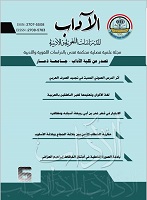The Features of the Social Curriculum in the Arab critics studies of the Saudi Novel
DOI:
https://doi.org/10.53286/arts.v1i6.264Keywords:
Curriculum, Social, Saudi Novel, Arab CriticsAbstract
This study is concerned in exploring the features of the social approach in critical studies accompanying the Saudi novel in its successive stages. Before entering the core of the study, the researcher has focused on the location of the social approach in literary studies and the relationships that exist between it and the approaches of pure social studies. Then, follow the case of overlapping between the narrative space and the social reality. The study has also reviewed the most important luminaries of this approach, and their cognitive contributions. As the researcher believes in the importance of monitoring and analysis, he has traced the most important contributions of literature made by Arab critics and scholars towards the historical and artistic development of the Saudi novel. He explained how there were many images of Arab critical studies of the Saudi novel, and the extent of diversity of the authors' views on the explanation, interpretation, and analysis of the novels. Surly, this diversity reflected its impact on the critical and narrative scene in the Kingdom of Saudi Arabia. The most important questions the researcher tried to find answers are; how did Arab critics rely on this approach in their studies of the Saudi novel? Then, what are the most significant systematic problems they had?. The researcher has closed this study with a conclusion that carries the most important results that emphasize the importance of this approach, and its effective role in reading the cognitive transformations of societies. Then, the has study has recommended deepen studies for this trend and intensifying scientific activity around it; perhaps this paves the way for establishing critical, methodical and authentic of Arab approaches.Downloads
Downloads
Published
How to Cite
Issue
Section
License
Copyright (c) 2021 عبد الرحمن بن خلف الرشيدي، إبراهيم بن علي الدغيري

This work is licensed under a Creative Commons Attribution 4.0 International License.
Copyright and Licensing
copyright is retained by the authors. Articles are licensed under an open access Creative Commons CC BY 4.0 license, meaning that anyone may download and read the paper for free. In addition, the article may be reused and quoted provided that the original published version is cited. These conditions allow for maximum use and exposure of the work.



